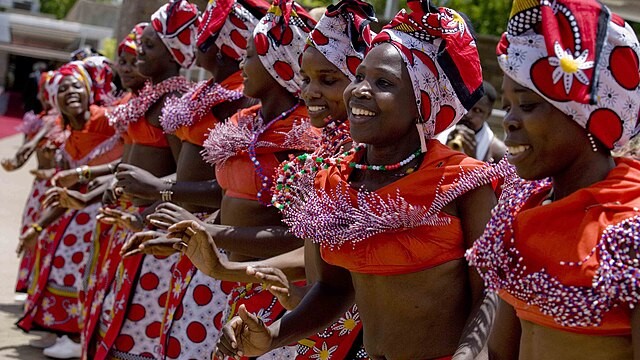In the humid air of Mombasa’s coastal evenings, the strains of taarab music drift across courtyards, carrying poetry and rhythm into the night. The dance that accompanies it is as fluid as the ocean itself—hips swaying in intricate patterns, movements tied to the ebb and flow of Swahili culture. Along Kenya’s coast, dance serves as both performance and conversation, an art form that merges music, storytelling, and identity.
Across the country, every region has cultivated its own styles, often rooted in ritual, celebration, or collective memory. In central Kenya, the Kikuyu people’s ngoma dances unfold in circular formations, echoing the symbolism of unity. Drums and stringed instruments accompany songs that recount oral histories, weaving narrative into movement. The gatherings are as social as they are ceremonial, their rhythm sustained by generations of practice.
Further south, the Maasai command attention with the adumu, or “jumping dance.” Young warriors rise vertically into the air, one after another, while the community encircles them in song. The spectacle is both a display of endurance and a rite of passage, communicating pride, bravery, and readiness for adulthood. Bright red shuka cloth and intricate beadwork heighten the visual force of the performance, each detail carrying cultural weight.
Western Kenya brings the relentless beat of isukuti drums, central to the Luhya community’s celebrations. The dance that follows—characterized by vigorous stomping and rapid movements—embodies festivity and collective joy. Weddings, initiations, and communal gatherings are incomplete without it, the pounding rhythm ensuring participation from all present.
Northward, in the arid lands of the Samburu, movement takes on a different tone. Dances here often serve as storytelling, blending song and synchronized motion to convey histories, myths, and the rhythms of pastoral life. The bright beadwork of dancers catches the light as they move in harmony, emphasizing the ties between spirituality, tradition, and community expression.
Across Kenya, dance functions not merely as entertainment but as a vessel for continuity. It is a medium through which stories are told, identities reaffirmed, and communal bonds strengthened. While styles vary widely, the unifying element lies in the ability of movement to preserve memory and transmit meaning across generations.
What emerges is a living archive—an art form that has endured centuries of change, adapting without losing its essence. From the coast to the highlands, from the savannah to the desert, Kenya’s dances remain among the most resonant expressions of culture, resilience, and belonging.
Sources
- Ndigirigi, Gachanja. Emerging Perspectives on Kenyan Dance and Performance. East African Educational Publishers, 2017.
- UNESCO. “Ngoma Traditions of Kenya: Intangible Cultural Heritage Profiles,” 2022.
- Osogo, John. The Music and Dance Traditions of Western Kenya. Kenya Literature Bureau, 2015.


